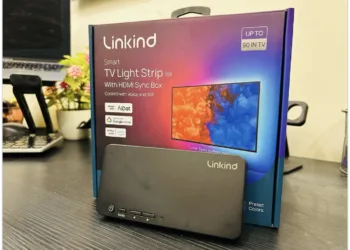The Downsides of Smart TVs
Smart TVs have transformed the way we consume entertainment, offering a range of features that allow for streaming, gaming, and connectivity. However, while these devices bring numerous benefits, they also come with a range of downsides that potential buyers should consider.
Privacy Concerns
One of the most significant issues surrounding smart TVs is privacy. Many models collect data on viewing habits, which poses several risks:
- Data Collection: Smart TVs often track what you watch, how long you watch it, and even your search history to personalize advertising and recommendations.
- Third-Party Distribution: Your information may be shared with third-party advertisers, leading to targeted ads that can feel intrusive.
- Surveillance Risks: Some smart TVs come equipped with built-in cameras and microphones. If not properly secured, this could allow unauthorized access to sensitive conversations.
Security Vulnerabilities
Smart TVs are essentially internet-connected devices, making them susceptible to various cybersecurity threats.
- Hacking Risks: Unsecured smart TVs can be vulnerable to hacking, potentially allowing attackers to gain access to your home network.
- Firmware Updates: Lack of regular updates can leave smart TVs exposed to security vulnerabilities that manufacturers fail to patch.
- Malware Issues: Downloading apps from unofficial sources can lead to malware infections, compromising both the TV and connected devices.
Limited App Availability
Although smart TVs boast a plethora of applications, they may not always feature everything users want.
- App Compatibility: Some popular streaming services may not be available on certain smart TV platforms, limiting viewing options.
- Operating System Restrictions: Different brands operate on various ecosystems, which can hinder app accessibility and compatibility across devices.
Performance and Longevity Issues
Smart TVs, like any electronic device, have a limited lifespan and may face performance issues over time.
- Slower Performance: Over time, these devices can become sluggish, resulting in lag while navigating menus or launching apps.
- Hardware Limitations: Lower-priced models may not have the necessary hardware to support future software updates or newer app versions.
- Obsolescence: As technology evolves, older smart TVs may not be able to take full advantage of new features or services.
Dependence on Internet Connectivity
A fundamental aspect of smart TVs is their reliance on a stable internet connection.
- Streaming Issues: Without a robust internet connection, streaming quality can suffer, leading to buffering or reduced picture quality.
- Offline Functionality: Many features of smart TVs are contingent upon internet access. In the absence of Wi-Fi, users may find their options significantly limited.
- Service Outages: An internet service disruption can render smart TV functions unusable, unlike traditional TVs that simply require a signal.
Cost Considerations
Investing in a smart TV can come with hidden costs that go beyond the initial purchase price.
- Subscription Fees: Many streaming services require a monthly subscription, adding up over time and sometimes surpassing cable costs.
- Additional Equipment: Some users may need to invest in additional devices or accessories to enhance functionality, such as streaming sticks or soundbars.
- Electricity Usage: Smart TVs can consume more power than traditional models, leading to increased electricity bills.
Complexity and User Experience
While smart TVs seem to offer a user-friendly interface, they can sometimes complicate the viewing experience.
- Learning Curve: New users may encounter difficulties in navigating settings, app installations, and troubleshooting issues.
- Remote Control Overload: With so many functions available, smart remotes can become complicated and overwhelming for some users.
- Updates and Changes: Frequent software updates can alter user interfaces, leading to confusion and frustration for those who prefer consistency.
Smart TVs undoubtedly offer a wealth of features and conveniences, but it is important to weigh these advantages against their potential downsides. Understanding the drawbacks can help users make informed decisions and enhance their overall media experience.









